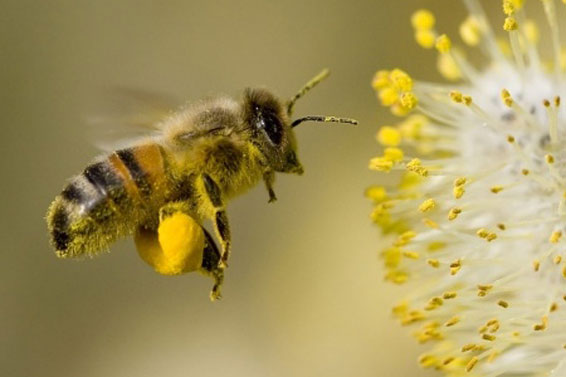
Can diatomaceous earth harm bees the way it harms other insects? We get this important question a lot. The short answer is yes; it can harm them. But it doesn't have to. It is possible to apply diatomaceous earth for pest control and not affect the bees.
As you might already know, DE is effective on insects because of their exoskeletons. DE scratches off and absorbs the waxy, oily coating on an insect's exoskeleton, which eventually leads to death by dehydration. DE can have this effect on bees too; however, bees have at least one advantage–possibly two–that protect them from the effects of DE.
The first and most obvious advantage bees have is that they are flying insects. For DE to take effect, an insect has to crawl through it. Because bees are mainly airborne, they are far less likely to come into contact with DE than other pests, such as ants, cockroaches, and bed bugs. So applying on soil, concrete, and other areas level to the ground shouldn't be a problem. It's also good to apply to plants as long as you follow these precautions:
- Don't apply DE on blossoms or on foliage immediately surrounding them.
- Only apply on the stems and leaves of plants if you don't see bees crawling on them.
- If bees start crawling on the stems and leaves of a plant you have already applied DE on, spray it off with water.
- Apply early in the morning or late in the evening when bees are less active. This will help bees avoid contact with clouds of DE dust that may puff up as you apply.
Bees also seem to have some natural defenses that protect them from DE. Tui Rose, the author of Going Green Using Diatomaceous Earth How-to Tips, says this: "When Diatomaceous Earth is applied to crops or orchards, the honey bee tends to protect themselves by simply avoiding those blossoms already treated with DE. However, if DE does get on a bee's body, it is covered with slick hairs that are able to help prevent dehydration of body fluids. Then the bee simply vibrates its wings rapidly to remove the dust and protect itself."
Bees are pretty good at avoiding DE and removing it from their bodies. Still, we urge you to be cautious and keep it as far away from bees as possible.
So, can diatomaceous earth harm bees? Yes, but they are not as vulnerable to it as other pests. And as long as you apply it carefully, you can use DE as a pesticide without harming them. By using DE, you will also replace toxic chemicals with an organic alternative, which will not only benefit bees but the environment as well.


